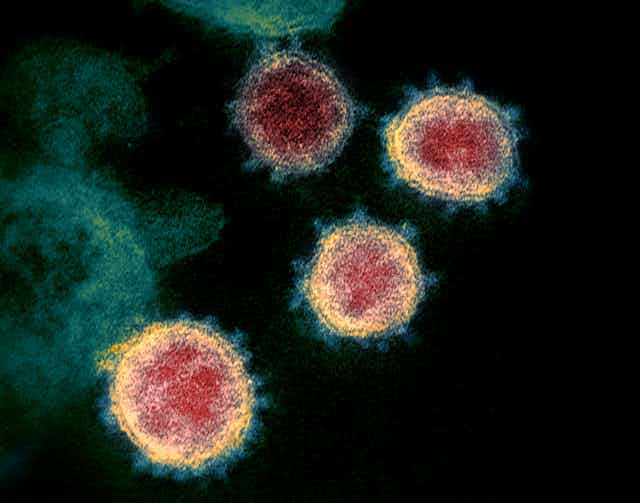A coronavirus may have swept across East Asia more than 20,000 years ago, leaving traces in the DNA of people in modern China, Japan and Vietnam. Our research, published in Current Biology, found evidence of genetic adaptation to the coronavirus family of viruses in 42 genes in modern populations in these regions.
The COVID-19 pandemic, caused by the coronavirus SARS-CoV-2, is so far responsible for more than 3.8 million deaths and billions of dollars in economic losses worldwide. The coronavirus family also includes the related MERS and SARS viruses, both of which have caused significant deadly outbreaks in the past 20 years.
Our results show how the hunt for genetic traces of historical viral outbreaks may help us treat the outbreaks of the future.
Pandemics may be as old as human history
We have had pandemics before. In the 20th century alone, three variants of the influenza virus each resulted in wide-ranging outbreaks that killed millions: the “Spanish Flu” of 1918-20, the “Asian Flu” of 1957-58, and the “Hong Kong Flu” of 1968-69.
Historical records of outbreaks caused by viruses and other pathogens stretch back thousands of years. It seems plausible that these interactions go back even further, to the earliest periods of human prehistory.
The ancient migrations that saw our ancestors spread out from Africa across the world would have introduced them to new pathogens. Like many other environmental challenges, these ancient viral encounters may have triggered adaptions that helped our ancestors survive. These adaptations may have included physiological or immunological changes that improved resistance to infection or reduced the health impacts of the disease.
Adaptation to disease can leave genetic traces
Over the past few decades, geneticists have devised powerful statistical tools to uncover genetic traces of historical adaptation events that remain present within the genomes of people living today. These tools have allowed scientists to discover genes that mark adaptations for high-altitude living and the adult consumption of milk, among other things.
Our team was curious to see whether historical encounters with ancient coronaviruses have left any such trace in today’s human populations. Besides revealing historical coronavirus outbreaks, this information may hold new insights in the genetic basis of coronavirus infection and how these viruses cause disease in modern humans.
Read more: What is a virus? How do they spread? How do they make us sick?
Viruses are simple creatures with one objective: to make more copies of themselves. But their simple biological structure means they cannot reproduce independently.
Instead, they must invade the cells of other organisms and hijack their molecular machinery. Viral invasions involve attaching and interacting with specific proteins produced by the host cell, which we call viral interacting proteins (VIPs).
The marks of ancient coronavirus
We applied cutting-edge computational analyses to the genomes of more than 2,500 people from 26 populations around the world. We found signatures of adaptation in 42 different human genes that encode VIPs.
These VIP signals were present in only five populations, all of them from East Asia – the likely ancestral homeland of the coronavirus family. This suggests the ancestors of modern East Asians were initially exposed to coronaviruses around 25,000 years ago.
Further testing revealed that the 42 VIPs are primarily expressed in the lungs, which is the tissue most affected by COVID-19 symptoms. We also confirmed these VIPs interact directly with the SARS-CoV-2 virus responsible for the current pandemic.
Other independent studies have also shown that mutations in VIP genes may mediate SARS-CoV-2 susceptibility and the severity of COVID-19 symptoms. In addition, several VIP genes are either currently being used as drug targets for COVID-19 treatments or are part of clinical trials for this purpose.
Several of the adaptive VIPs identified in our study are also drug targets for other types of viruses, such as Zika virus and hepatitis C. Several of these drugs have been successfully repurposed, and suggests that others could potentially be repurposed for COVID-19 treatment.
By uncovering the genes impacted by historical viral outbreaks, our study points to the promise of evolutionary genetic analyses as a new tool for fighting future outbreaks.

